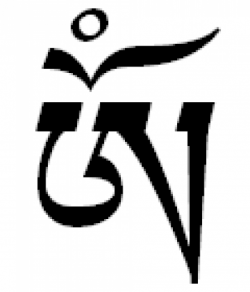Tibetan Aum

Since Buddhism arose out of Hinduism, it is not surprising that the mantra 'Aum' was absorbed into the Buddhist tradition; however, Buddhists almost never transliterate it as ‘Aum,’ but use ‘Om’ instead.
The mantra "Om mani padme Hum" in Tibetan script
There are many Buddhist mantras that incorporate the sound of ‘Om’ into their formulation. Probably the most famous of these is the six-syllabled mantra, Om Mani Padme Hum. The common translation of this mantra is, "Hail the jewel in the lotus" (‘Aum’ = Hail, ‘Mani’ = Jewel, ‘Padme’ = Lotus and Hum). However, the scholar Donald Lopez, in his book Prisoners of Shangri-La: Tibetan Buddhism and the West, challenges this conventional translation, which he claims to be an interpretation supported by neither linguistic analysis nor Tibetan tradition. He suggests that Manipadme is actually the name of a bodhisattva, a form of Avalokiteshvara who in any case has many other names, including Padmapani or “lotus flower in hand.” The Brahminical insistence on absolutely correct pronunciation of Sanskrit broke down as Buddhism was exported to other countries where the inhabitants found it difficult to reproduce the sounds. So in Tibet, for instance, where this mantra is on the lips of many Tibetans all their waking hours, the mantra is pronounced, "Om mani peme hum."
In China, the character ‘Om’ appeared as "唵" in Chinese Buddhism, and was also utilized in prayers towards Amitbha Buddha in Pure Land Buddhism, among other sects.
The Brahmic script om-ligature has become widely recognised in Western counterculture since the 1960s, mostly in its standard Devanagari form (ॐ), but the Tibetan alphabet om (ༀ) has also gained limited currency in popular culture.
© Symbols.com
